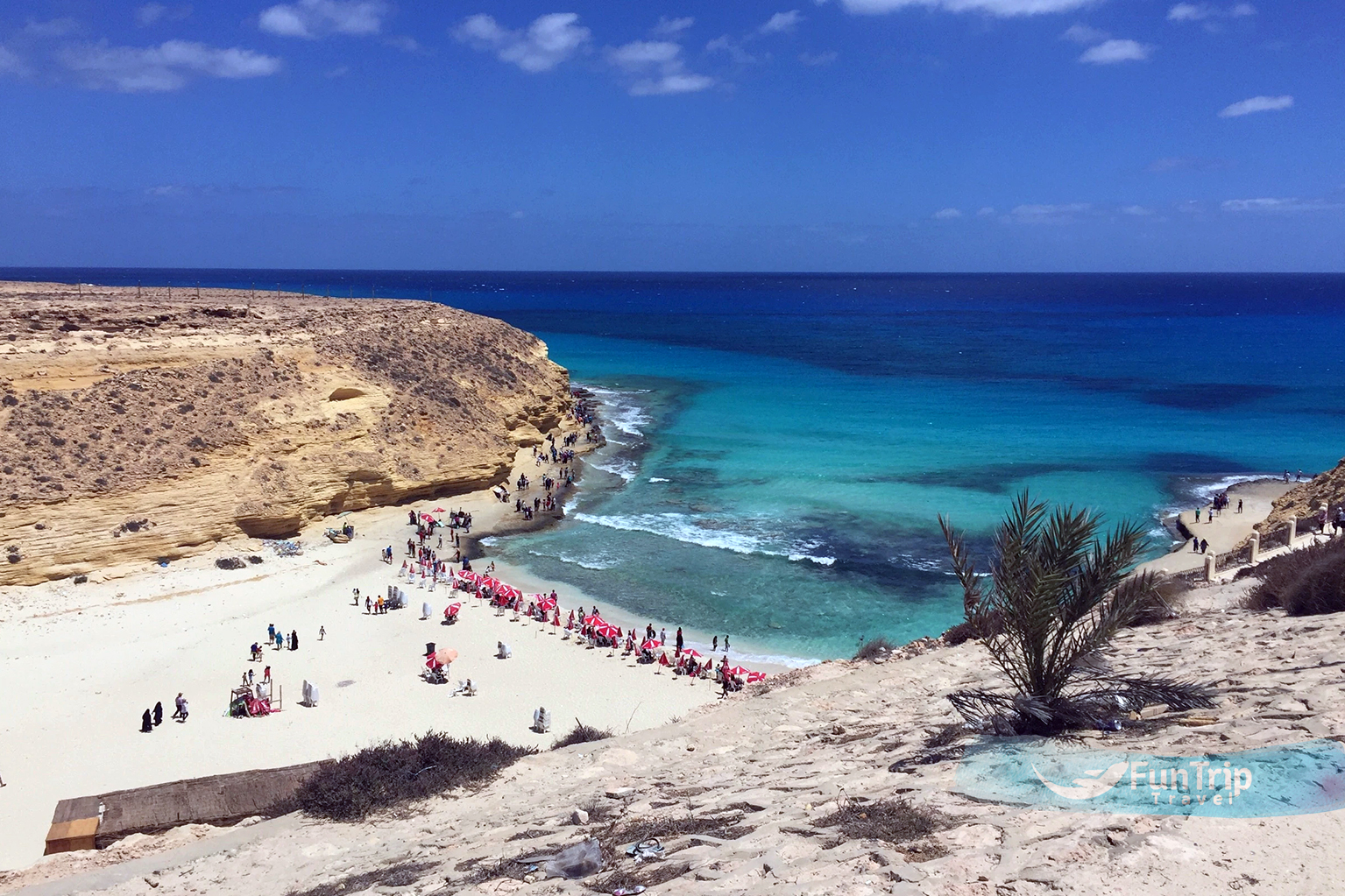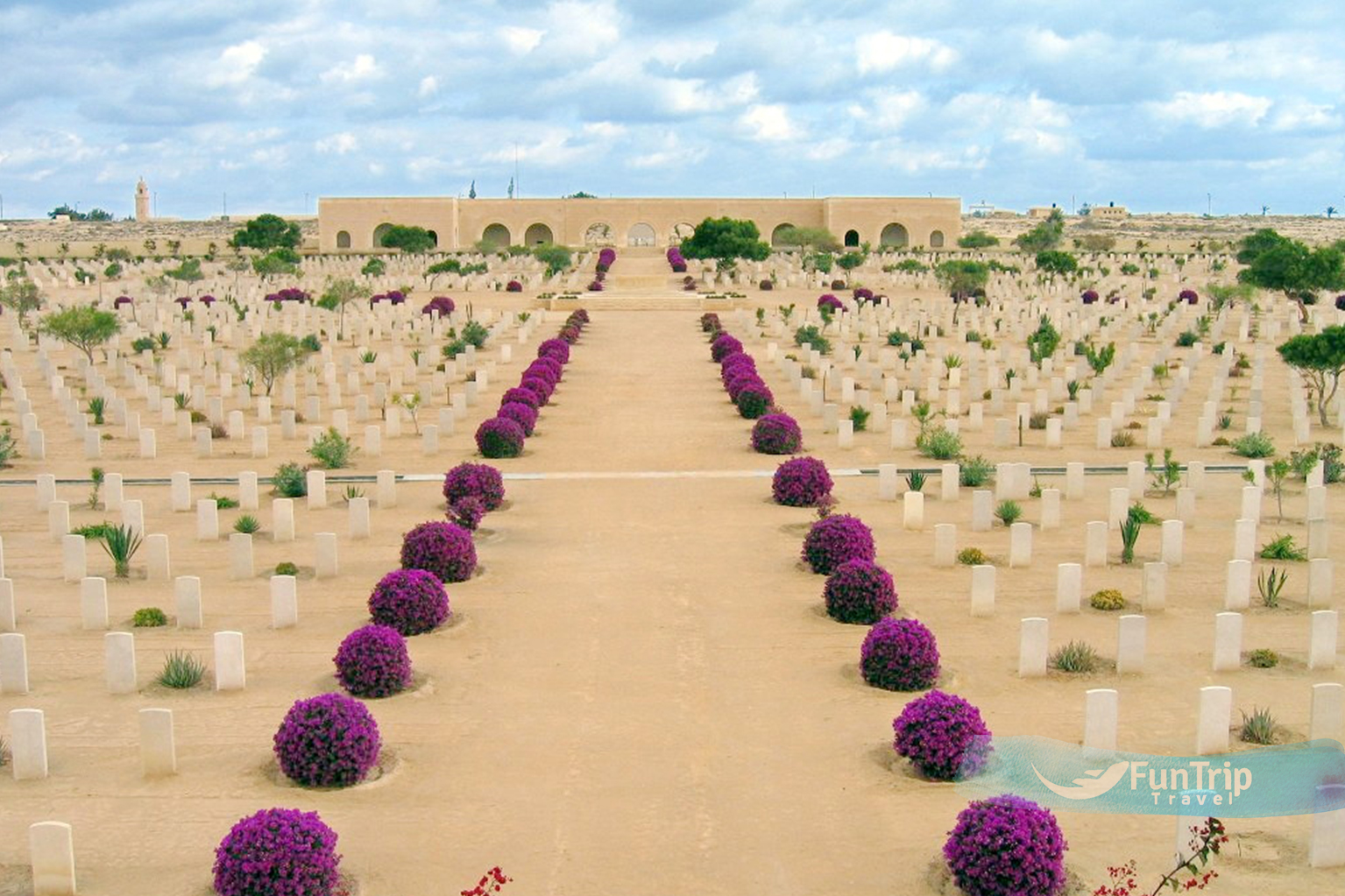Is a relatively secluded destination on Egypt’s Mediterranean coast, nestled inside a large circular bay and protected from high seas by a series of rocks forming a natural breakwater.
It is the capital of the Matrouh Governorate, which stretches from the 61st km of the Alexandria-Matrouh highway to the Egypt-Libyan border (450 km of coast), East to West, and 350 km deep into Egypt’s western desert, including Siwa Oasis. Many believe that Cleopatra herself bathed in the tranquil waters of Marsa Matrouh, with its long sandy white beaches and crystal clear waters, such as Agiba Beach and Gharam Beach, described by many as one of the most beautiful seashore landscapes in the world. Cleopatra’s Beach, a well-known attraction, is still accessible and will not be missed during your visit. The coastal Mediterranean climate gives this town its coolness in the summer and coldness in the winter. The months of May and September are ideal for a visit.
Because of the depth differences in Matrouh’s bay, the water’s colour ranges from blue to green. The irregular seabed creates an incredible underwater world of mountains, valleys, and colourful fish species. Marsa Matrouh is located in the northwestern corner of Egypt, where the desert fox himself, Erwin Rommel, chose a cave near the shore to command operations during the Battle of El-Alamein. Rommel’s cave is still standing; it has been converted into a “Rommel Museum,” which can be visited today.

EXPLORE. CONNECT. CREATE MEMORIES
El Alamein War Memorials
A hardscrabble township about 112 km west of Alexandria, has a fascinating place in modern world history. The Allies’ first decisive victory in World War II’s North Africa campaign was won across this parched stretch of unremarkable desert. More than 80,000 soldiers from Australia, New Zealand, India, and the United Kingdom (Allies), as well as Germany and Italy, were killed or injured in the bloody battles that took place here in October 1942. (Axis Forces). Today, the war memorials that remain serve as a poignant reminder of the 13-day battle that claimed so many lives.
The excellent El Alamein War Museum provides a good overview of the El Alamein campaign, with plenty of military memorabilia on display. The Commonwealth Cemetery is a well-kept memorial to the fallen, with 7,000 tombstones arranged in regimented rows among well-kept desert plants. The boxy German Memorial, just north of town along the coastal highway, is where most of the 4,500 German dead are buried, and the Italian Memorial, a couple of km north, is also home to a tiny but interesting museum.

